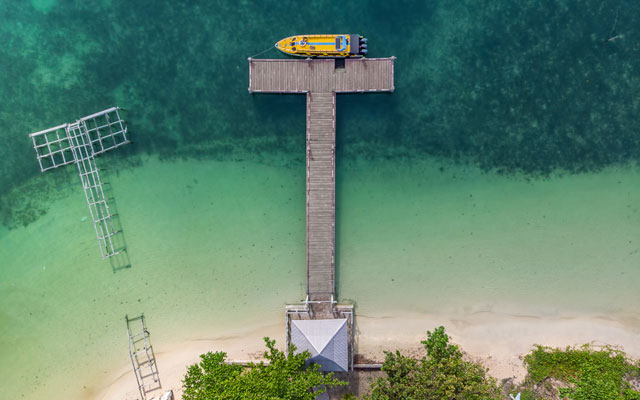Indonesia is intensifying efforts in developing the tourism industry beyond Bali, with the government pumping investment dollars into building supporting facilities and infrastructure in areas like Lake Toba, Mandalika, Labuan Bajo and Borobudur – which includes the Yogyakarta-Solo-Semarang triangle – this year as part of its 10 New Balis directive.
Efforts and dollars plowed by the government into developing these destinations has also spurred the private sector to seek out business opportunities in peripheral destinations beyond Bali, including Morotai, which is part of the 10 New Balis, Palu (Central Sulawesi) and Sorong (Papua).
One such enterprise is Sahid Hotels & Resorts which has opened its first three-star property in Morotai. The 62-key Moloka’I by Sahid, which sits beside Juanga Ferry Terminal, is part of the hotel’s move to back the government’s 10 New Bali initiative, said Hariyadi Sukamdani, president director of Sahid Hotels & Resorts.

“The growth of tourism to Morotai has prompted Sahid Hotels & Resorts to expand to the island. Morotai is one of the primary (tourism) destinations in eastern Indonesia, famed especially for its marine attractions,” he said.
Similarly, Tauzia Hotels is also aligning its property pipeline with the projected growth of Indonesian tourism by building properties in less-developed regions, said Armand Steinmeyer, director of business development and investment at Tauzia International Management.
For instance, although Raja Ampat is West Papua’s key attraction, Tauzia is anchoring Sorong as the development platform in the region. Likewise, the group is looking to develop hotels in Medan overlooking Lake Toba. “Medan is the gateway to North Sumatra, with rooms still for development there,” Steinmeyer said.
Besides Sorong and Medan, Tauzia is planning to build properties in Lombok, Palu, and Pontianak or Singkawang in West Kalimantan.
“Our vision for 2020 is to support these destinations to become globally competitive in South-east Asia,” Steinmeyer said.
For Pacto DMC, the catalyst for expansion beyond Bali stemmed from the “unhealthy” over-reliance on the famed tourist island, which currently comprises 60 per cent of its offerings.
Umberto Cadamuro, COO inbound of Pacto, said: “We have learnt from natural disasters like the Mount Agung eruption and earthquake (in Lombok) that we cannot depend on Bali alone.
“We are lucky that Indonesia is large enough for us to have opportunities everywhere. As part of our 20-year development, the big plan is to spread our revenue (generation) across Indonesia.”
For starters, the company will add product development divisions in each of its branch offices in Medan, Bandung, Surabaya, Yogyakarta and Makassar to broaden and strengthen its operations, Umberto said.
“As such, if anything happens in one destination, we still have others to offer,” he said, adding that Pacto’s development pipeline does not always align with the government’s plans.
Umberto also does not see the necessity of waiting for the infrastructure to fall in place to start developing new tourism products in a destination.
“Labuan Bajo started small and as facilities and infrastructure develop, arrivals are also growing. For Lake Toba, we have the opportunity to land one hour from the island (at Silangit Airport). That is already helpful because we can go from Medan to Toba, then fly to Jakarta directly,” he said.
“We can start working with a market (segment) now, and eventually, the volume will come.”




















